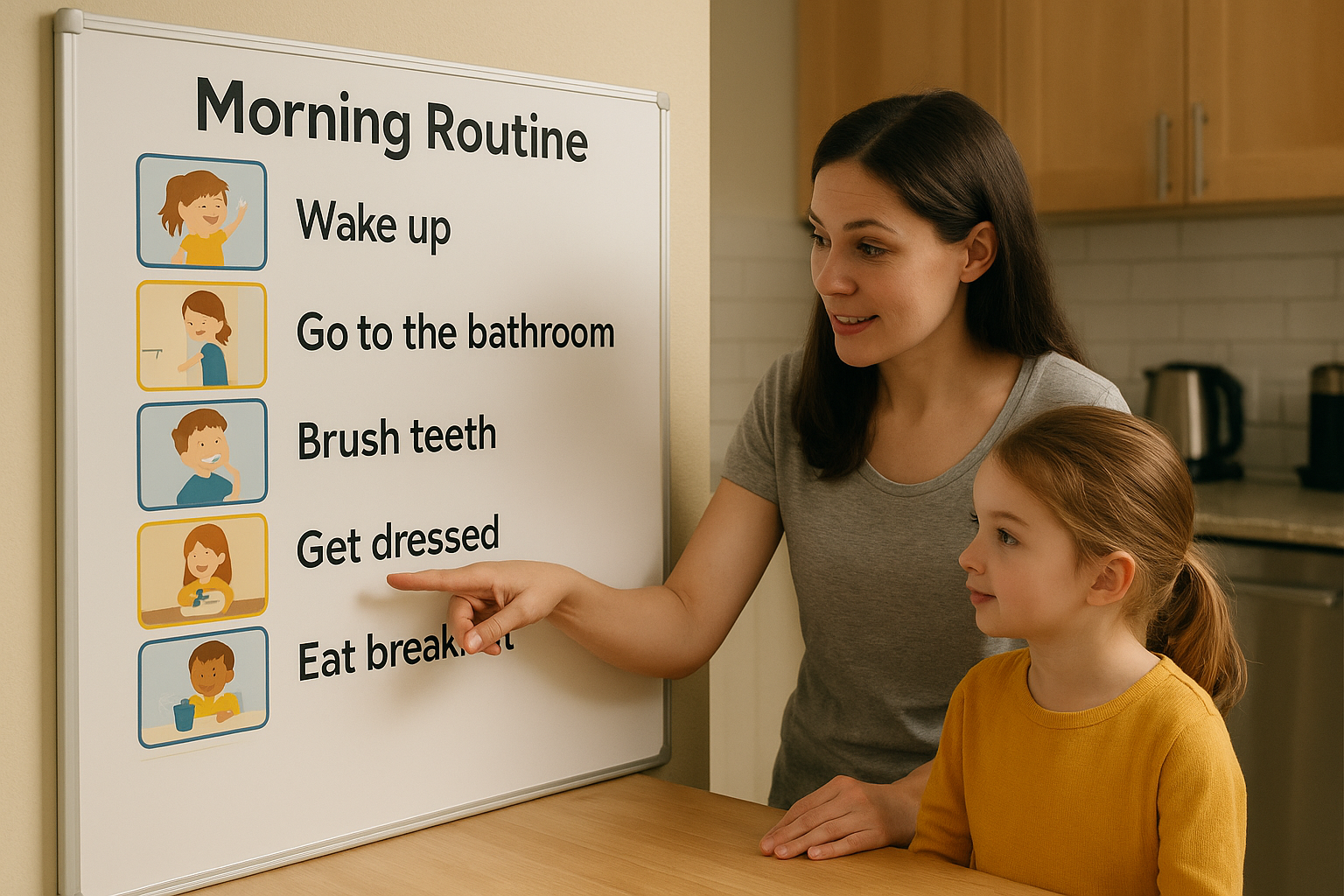Creating healthy routines for young children is one of the most important things a parent or caregiver can do. Children thrive on structure and predictability, and having consistent routines in place can help them feel secure, build independence, and develop lifelong habits. This article offers practical, real-world advice on how to set up routines that truly work — even when life gets messy.
Why Routines Matter in Early Childhood
Routines are not about strict schedules or control; they are about creating a rhythm that supports your child’s physical and emotional needs. When a child knows what to expect, they feel more in control, more cooperative, and less anxious. Routines also:
- Support better sleep
- Improve behavior and cooperation
- Encourage independence
- Reduce parental stress
Let’s look at the key areas where routines can make a major difference.
1. The Morning Routine
Mornings can set the tone for the entire day. A calm and structured morning helps children feel confident and less overwhelmed.
Tips to build a morning routine:
- Wake up early enough to avoid rushing. When parents are rushed, kids feel it.
- Keep steps predictable and simple: Wake up, go to the bathroom, brush teeth, get dressed, eat breakfast.
- Use visual aids: A picture chart of tasks can help younger children follow along.
- Allow time for connection: A quick cuddle or chat can help start the day with positivity.
2. Mealtime Routine
Mealtimes aren’t just for nutrition — they are also a great opportunity to bond and teach social skills.
Tips for smoother mealtimes:
- Keep a regular schedule: Try to serve meals around the same times daily.
- Create a pleasant environment: Turn off screens, use simple table manners, and talk about the day.
- Involve the child: Let them help set the table or choose a healthy side dish.
3. Playtime and Learning Activities
Play is the work of childhood. Structured and unstructured playtime helps children explore, learn, and grow.
Tips for organizing play and learning:
- Set up a predictable block of time each day for play.
- Create learning moments through play: Sorting toys, singing alphabet songs, counting blocks.
- Mix solo and interactive play: Encourage them to play alone sometimes to develop creativity and independence.
4. Nap and Quiet Time
Rest is essential for a child’s development, even as they get older.
To create a restful nap or quiet time:
- Stick to consistent times each day.
- Use a calming routine before rest: A short story, gentle music, dim lights.
- For older children who no longer nap: Introduce quiet time for reading or quiet toys.
5. Bedtime Routine
A good night’s sleep begins long before your child’s head hits the pillow. A calm and consistent bedtime routine can prevent nighttime struggles.
Tips for peaceful bedtimes:
- Keep bedtime at the same time every night.
- Wind down slowly: Turn off screens at least 1 hour before sleep.
- Establish a predictable sequence: Bath, pajamas, brush teeth, story, cuddle, lights out.
- Avoid stimulating activities right before bed.
6. Transitions and Flexibility
Life with children is never perfect — and that’s okay. What matters is having a structure that gives your child a sense of stability while still allowing for flexibility when needed.
Tips to handle transitions:
- Give warnings: “In five minutes, it will be time to stop playing and get ready for dinner.”
- Use songs or timers: These help make transitions smoother and less stressful.
- Be consistent but adaptable: If your child is sick or there’s a change in routine, explain it calmly and clearly.
7. How to Make Routines Stick
Building routines takes time, patience, and practice — both for you and your child.
To make routines part of everyday life:
- Be consistent: Children learn through repetition and predictability.
- Celebrate small wins: Praise and encouragement go a long way.
- Model the behavior you want: Your calm presence helps guide them.
- Adjust as they grow: What works at age 2 won’t work at age 5 — routines evolve.
Why Your Routine Doesn’t Need to Be Perfect
Perfection isn’t the goal — connection is. What matters most is that your child feels safe, loved, and supported in their everyday life. If you forget a step, miss a bedtime, or need to adjust your routine on the fly, that’s okay. Children are incredibly adaptable when their emotional needs are met.
Final Thoughts: Routines Are Acts of Love
Establishing routines is one of the quiet, powerful ways parents show love. By creating a predictable world, you give your child confidence, comfort, and the foundation they need to flourish. Remember: even the simplest routines — brushing teeth together, reading a bedtime story, or singing a morning song — become cherished moments that shape a child’s sense of home and self.
